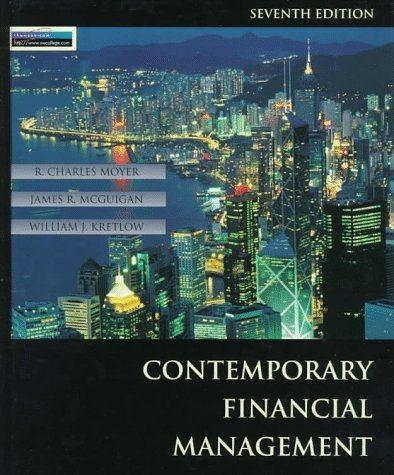Question
1. Why do stock index funds have a higher rate of return than corporate bonds or savings accounts? a. There are more people investing in
1. Why do stock index funds have a higher rate of return than corporate bonds or savings accounts?
a. There are more people investing in a stock index fund b. There is less risk with a stock index fund c. There is more risk with a stock index fund d. More cash is required to invest in a stock index fund
/
2. Which of the following correctly describes the relationship between risk of loss of principal and potential return for financial assets such as stocks and bonds? a. As the level of risk of loss of principal increases, the level of potential reward decreases. b. As the level of risk of loss of principal decreases, the level of potential reward increases. c. There is no relationship between the two.
d. As the level of risk of loss of principal increases, the level of potential reward increases.
/
3. How do businesses and governments benefit from capital markets? a. Companies and governments benefit because they have access to funds for projects without waiting until they have enough saved or in the case of the government can collect enough through tax revenue. b. Capital markets provide easy access to cash for short-term use, such as payroll expenses or office supplies. c. Companies and governments pay taxes into the capital markets. These funds are available for consumers to borrow. d. Capital markets provide companies with risk-free access to money from the government that can be used for expansion.
/
4. Which statements about bonds are incorrect? Choose all that apply. a. A bond is an evidence that the bondholder owns a share of a corporation. b. With bonds, the issuing corporation has a legal obligation to make interest payments. c. With bonds, the issuing corporation has no legal obligation to pay back the original investment amount to the investor. d. Bondholders (bond investors) have priority over stockholders in extracting the remaining assets of a bankrupt corporation.
/
5. Which statements below are incorrect about the final IPO price? Choose all that apply.
a. The final IPO price is set by the SEC b. The final IPO price is the price per share of a stock at which it will begin trading to the public c. The final IPO price is the price per share of stock at the end of the first day of trading to the public d. The price of the IPO shares at the end of the first day of trading can be higher or lower than the final IPO price
/
6. Which statement below about mutual funds is incorrect? a. Mutual funds are actively managed by an expert. b. Mutual funds are pooled stocks or bonds put together to attain an objective (e.g., generating income, matching the movement of a specific index). c. Mutual funds are actively traded on an exchange. d. By investing in a mutual fund, you get the advantage of spreading your investment among various different holdings, which allows you to access more opportunities and spread your risk across more investments.
Step by Step Solution
There are 3 Steps involved in it
Step: 1

Get Instant Access to Expert-Tailored Solutions
See step-by-step solutions with expert insights and AI powered tools for academic success
Step: 2

Step: 3

Ace Your Homework with AI
Get the answers you need in no time with our AI-driven, step-by-step assistance
Get Started


